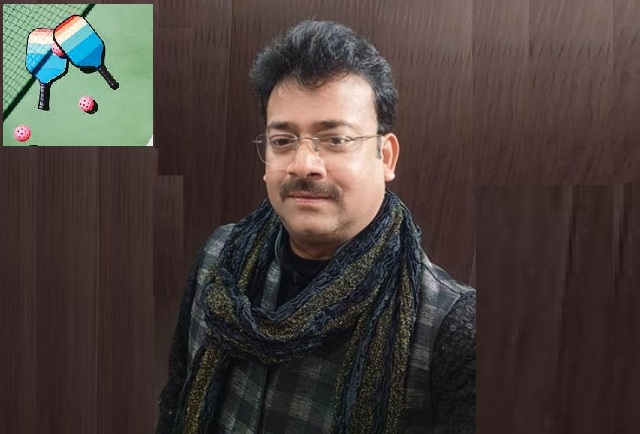Shubham Paliwal, vice president of the Uttar Pradesh Pickleball Association, says even if cricket rules your heart, there is room for Pickleball. Find out how:
Let’s face it—cricket is everywhere. From tea stalls to living rooms, from school breaks to boardroom banter, it’s the one sport that has glued generations together in India. We’ve grown up with it, we celebrate it like a festival, and we carry its stories like family heirlooms.
And I say this as someone who deeply respects cricket. It’s a beautiful game, rich with emotion, legacy, and pure magic. But sometimes, just sometimes, I wonder—have we left any space for something new?
Cricket’s popularity isn’t a mystery. It’s got everything—celebrity players, nail-biting finishes, massive crowds, and of course, the legacy of that iconic 1983 World Cup win. It became more than a sport; it became ours. And today, with leagues like IPL and global coverage, it’s not just a game—it’s a mega-industry.
But here’s something I want to share with you—there’s a new game in town, and it’s quietly making its way into hearts, homes, and high-rises across India. It’s called Pickleball.
Yes, the name makes people smile at first. I get that. But once they try it, they’re hooked. And as someone who’s working on the ground, both as a coach and as the Vice President of the Uttar Pradesh Pickleball Association, I can tell you—this game is special.
Pickleball is simple. It’s played on a small court with a paddle and a plastic ball. It’s a mix of tennis, badminton, and table tennis—but way more accessible. You don’t need to be a pro. You don’t need a huge field or expensive gear. You just need a bit of space, a few friends, and that first serve.
So why are people loving it?
Well, because it feels good. It’s light on the body, easy to learn, and great for all ages—kids, adults, even grandparents. I’ve seen three generations from the same family play together and laugh like kids. That’s powerful.
ALSO READ: ‘Too Much Cricket Has Taken A Toll On Its Quality’
It doesn’t eat up your day either. One game takes about 15 minutes. Perfect for a quick match after dinner or during your lunch break! You can play it indoors, outdoors, in schools, societies—anywhere.
And here’s the part that’s really exciting—Pickleball is growing fast. We’re seeing leagues form across India. Some team prices have already crossed ₹18 crore. Celebrities like Ritesh Deshmukh, Atlee, and Rishabh Pant are investing. There are state and national tournaments with real prize money. It’s no longer “that new game with a funny name”—it’s becoming a serious sport.
We’re also working hard to bring it into CBSE and SGFI schools, and internationally, there’s a strong movement to make it an Olympic sport. And at our academy, Pro Play Zone in Crossings Republik, we’ve already introduced it to our community. The response? Overwhelming. Pure joy, real connection, and so much fun.
Cricket will always be close to our hearts. But maybe it’s time to make space for a little more play. A sport that welcomes everyone, doesn’t need a stadium, and fills your soul just as much.
So the next time you ask, “What else is out there besides cricket?” Come pick up a paddle. I promise, Pickleball has something beautiful to offer.
As told to Deepti Sharma

